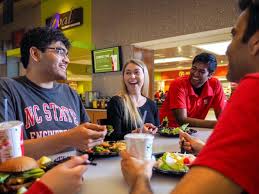America’s Food Supply – What’s Happening?
go.ncsu.edu/readext?681357
en Español / em Português
El inglés es el idioma de control de esta página. En la medida en que haya algún conflicto entre la traducción al inglés y la traducción, el inglés prevalece.
Al hacer clic en el enlace de traducción se activa un servicio de traducción gratuito para convertir la página al español. Al igual que con cualquier traducción por Internet, la conversión no es sensible al contexto y puede que no traduzca el texto en su significado original. NC State Extension no garantiza la exactitud del texto traducido. Por favor, tenga en cuenta que algunas aplicaciones y/o servicios pueden no funcionar como se espera cuando se traducen.
Português
Inglês é o idioma de controle desta página. Na medida que haja algum conflito entre o texto original em Inglês e a tradução, o Inglês prevalece.
Ao clicar no link de tradução, um serviço gratuito de tradução será ativado para converter a página para o Português. Como em qualquer tradução pela internet, a conversão não é sensivel ao contexto e pode não ocorrer a tradução para o significado orginal. O serviço de Extensão da Carolina do Norte (NC State Extension) não garante a exatidão do texto traduzido. Por favor, observe que algumas funções ou serviços podem não funcionar como esperado após a tradução.
English
English is the controlling language of this page. To the extent there is any conflict between the English text and the translation, English controls.
Clicking on the translation link activates a free translation service to convert the page to Spanish. As with any Internet translation, the conversion is not context-sensitive and may not translate the text to its original meaning. NC State Extension does not guarantee the accuracy of the translated text. Please note that some applications and/or services may not function as expected when translated.
Collapse ▲America’s Food Supply – What’s Happening?
If you are missing the luxury of going to your favorite restaurant and setting down to enjoy a meal with your family and/or friends, you are not alone. Nicholas E. Piggott, Professor and Extension Specialist, Department of Agricultural and Resource Economics, North Carolina State University, recently shared these numbers that document just where we tend to purchase our food. In 2018, U.S. consumers spent $781 billion (46%) on food at home and $931 billion (54%) on food away from home. Of the away from home food, 37% was at limited-service restaurants, 36% was at full-service restaurants, and 8% was at schools and colleges. This boils down to 43% of total spending on all food was in full-service restaurants, schools, and colleges. The Social distancing brought about by COVID-19 has severely restricted the restaurants, schools, and colleges ability to supply food.
Here in America, we have the best, most abundant and efficient agriculture production in the world. Why are there empty shelves and purchase limits at the grocery store? A big part of the answer is due processing and packaging capabilities. Keep in mind, Americans were eating out more than they ate at home. Restaurants and cafeterias purchase food in bulk as opposed to single serve or family size packaging. The processors were designed to meet the food industry needs prior to COVID-19. They too must implement social distancing, and some have even closed due to the pandemic. These combined factors have stretched the capacity of the processors beyond imagine, creating a “bottle neck” in the supply line.
To understand more about this situation, how it has drastically reduced farm commodity prices and impacted consumer prices, you should check out the document titled “The Coronavirus and Potential Impacts on the Agricultural Economy” by Nicholas E. Piggott. It can be found at: Download the Full Economic Outlook

NC State University students enjoying a meal together at a university dining facility.




